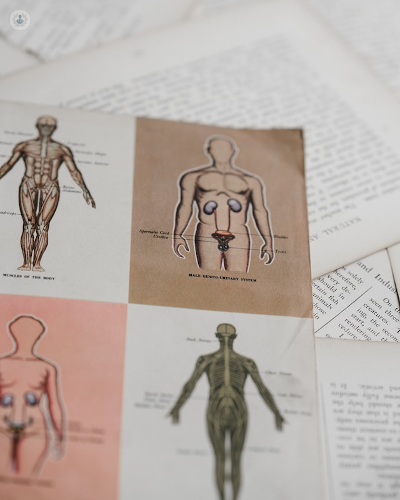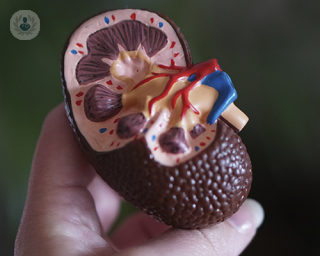Renal artery stenosis
Dr Andrew Palmer - Nephrology
Created on: 01-09-2013
Updated on: 09-13-2023
Edited by: Sophie Kennedy
What is renal artery stenosis?
Renal artery stenosis is a disease in which one or more arteries carrying blood to the kidneys (renal arteries) are narrowed and can become obstructed. As a result, the kidneys do not receive sufficient oxygen-rich blood.

Symptoms of renal artery stenosis
Generally, symptoms do not become apparent until the disease has reached an advanced stage. In some cases, the disease is discovered accidentally when testing is done for other reasons.
There are certain ways renal artery stenosis may present as it progresses:
- High blood pressure that is resistant to treatment
- Poor renal function found during the treatment of high blood pressure or during the care of other medical problems, particularly involving other vessel disease
- Retention of fluid and swelling of the lower extremities
- Heart failure resistant to treatment
- In severe cases, it can lead to long-term kidney dialysis
What are the causes of renal artery stenosis?
The main causes of renal artery stenosis are:
- Atherosclerosis of the renal arteries: the accumulation of fats, cholesterol and other substances (plaque) on the inner walls of the arteries, often associated with previous smoking. When it progresses, it can reduce renal blood flow and cause scarring or shrinkage of the kidneys.
- Fibromuscular dysplasia: occurs when the muscle of the arterial wall grows in an abnormal manner causing narrowing and is a cause of hypertension in younger people.
Can it be prevented?
Some cases can be prevented by adopting certain lifestyle measures, for example:
- Maintain a healthy body weight
- Pursue a healthy diet
- Do physical activity
- Reduce stress
- Moderate or cut out alcohol consumption
- Do not smoke
What is the treatment?
Treatment of renal artery stenosis varies according to the extent and severity of symptoms.
Possible solutions include balloon angioplasty in which a catheter with a balloon at its tip is introduced via the artery and usually a stent is placed across the stenosis.
In some cases, depending on the patient’s general condition and symptoms, only observation is needed with control of blood pressure, stopping smoking and treatment of cholesterol and improved lifestyle.


